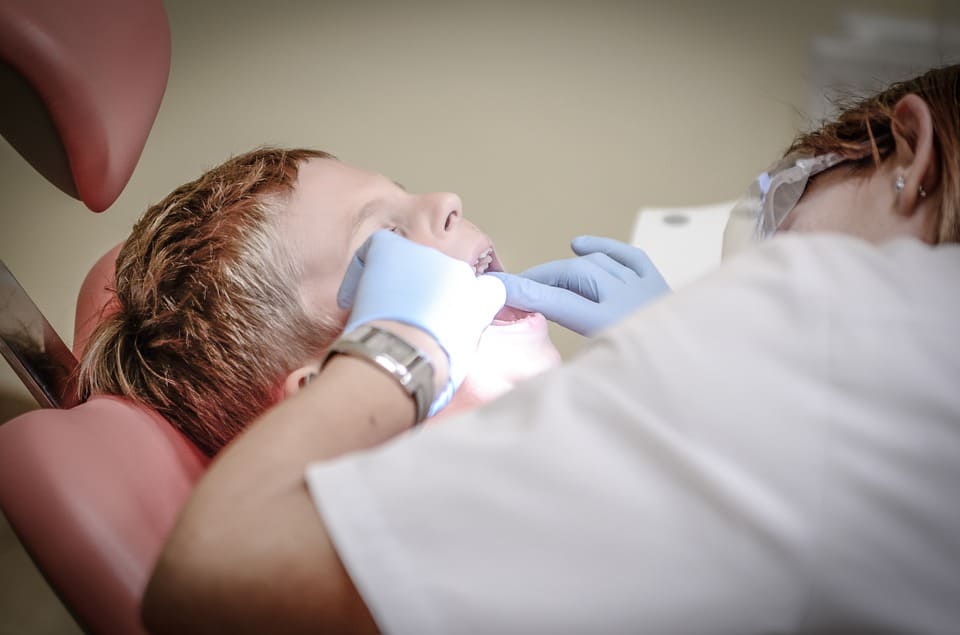What Kind of Training Do Pediatric Orthodontists Do?
Last Updated on April 21, 2024 by Gio Greenard
What is a Pediatric Orthodontist? If you have aspirations of becoming a pediatric orthodontist, you are certainly not alone; in fact, millions of people across the country enroll in dental school each year to help bring this dream to fruition. However, it worth noting that the journey can be long, particularly for those interested in a dental specialty like orthodontics, for example. If you enjoy working with children, you will most likely enjoy the role of a pediatric orthodontist, but what does becoming a licensed practitioner in this field entails? In this article, we will be taking a closer look at the profession to help readers decide whether or not this is the right career choice for them.
Contents
What Does It Mean to Be a Pediatric Dentist?
Before we discuss what is required to become a pediatric orthodontist, let’s take a moment to detail the process of becoming a pediatric dentist as this will be your first step in the process. As far as the difference between a standard dentist and a pediatric dentist, there are not too many difference as both are required to hold either a DDS or DMD. These two licenses both signify that a dentist has completed the requisite training and residency to become licensed in the state in which they practice. Unlike a regular dentist, pediatric dentists primarily treat infants, toddlers, and preteens. Along the standard training required to become a dentist, students interested in pediatric dentistry will have to take a course related to clinical management and child psychology. Collectively, this training enables pediatric dentists to perform the following treatments on their young patients:
- Treat cavities
- Evaluate and diagnose dental problems
- Examine jaw bone, gum tissue, and other areas of the oral cavity
- Perform orthopedic evaluations
- Conduct initial dental exams
What Are the Qualifications to Be a Pediatric Orthodontist?
When it comes to any dental specialty, including orthodontics, dental students will have to undergo additional training after they have earned their DDS or DMD. As far as a pediatric orthodontist is concerned, he or she will have to begin their journey by earning a bachelor’s degree followed by four years of dental school. Once they have earned their dental degree, they are required to complete a minimum of two years of training as an orthodontic resident. Lastly, he or she must pass an exam administered by the American Board of Orthodontics before being licensed as an orthodontist. As noted in the preface of this article, practitioners who will be treating children will have to take additional courses that are specific to providing dental care to children.
What Do Pediatric Orthodontists Do?
Similar to treating adult patients, a pediatric orthodontist helps resolve dental problems related to malocclusions, jaw pain, gum disease, sleep apnea, and a variety of other dental problems. In most cases, patients are referred to an orthodontist after their general dentists have observed misaligned or crooked teeth, which may be contributing to the patient’s discomfort. Also, it’s not uncommon for patients to request to be seen by an orthodontist as a means of improving the appearance of their teeth even if they’re not in pain.
Now that we have answered the questions regarding what do pediatric orthodontists do along with what are the qualifications to be a pediatric orthodontist, let’s take a closer look at the specific treatments that they offer:
BRACES – As you may have guessed, braces are one of the main orthodontic treatments offered by orthodontists. These devices consist of a system of brackets, wire, and rubber bands designed to straighten and gently move teeth into an optimal position. Also, they are often prescribed to treat gapped teeth, overbites, and a variety of other dental problems related to misaligned teeth.
ALIGNERS – Similar to braces, an orthodontist will recommend aligners to help straighten and move teeth into an optimal position. It’s worth noting that the most popular brand of aligners is Invisalign, which are commonly requested by teens and preteens as they don’t feel as insecure wearing them as they do with traditional braces.
SPLINTS – An orthodontist will often prescribe splints as a means of repositioning the jaw, which is often needed for patients struggling with TMJ (temporomandibular joint disorder).
RETAINERS – After removing a patient’s braces, it’s a common practice for an orthodontist to recommend the use of removable retainers to help ensure that teeth don’t shift back to their original location. The retainers come in a variety of colors, which appeals to younger children, and are worn primarily at night.
SPACE MAINTAINERS – Commonly recommended for young children, an orthodontist will prescribe space maintainers to fill a tooth gap caused by the premature loss of baby teeth. So how do these devices work, you ask? Well, they are bands that can be attached to the teeth on either side of the tooth gap. This process ensures that the adjacent teeth don’t shift and close the tooth gap while waiting for the permanent tooth to come in.
PALATAL EXPANDER – Despite its peculiar name, a palatal expander is an orthodontic device that orthodontist use to help in the extrusion of bones and joint in the mouth. The device is constructed of plastic and fits along the roof of the mouth and screwed into place.
LIP AND CHEEK BUMPER – As the name may suggest, this orthodontic device is designed to pull a patient’s lips and cheeks away from the teeth. This typically prescribed if a patient report pain resulting from their lips or cheeks making contact with their teeth.
Now that we’ve explored what it means to be a pediatric orthodontist, it’s clear that the field is both challenging and rewarding. Pediatric orthodontists have the unique opportunity to see firsthand how orthodontic treatments can enhance a child’s self-esteem and oral health. For those drawn to this specialized area of dentistry, the path involves significant commitment and dedication. If you’re considering this career, you are encouraged to follow your dreams and take the necessary steps to make it a reality. For those in Manhattan Beach seeking expert care, Our professional orthodontic services in Manhattan Beach offer top-tier treatment options, ensuring both children and adults receive the highest standard of orthodontic care.
Like what you read? Comment below or CLICK on an APP LOGO to follow us and share the conversation
220 N. Aviation Blvd. Suite A
Manhattan Beach, CA 90266
Phone: (310) 379-0006
What Kind of Training Do Pediatric Orthodontists Do?

Dr Patti Panucci attended the University of Louisville School of Dentistry for four years, where she graduated with a DMD degree (May 2000) among the Top 10 in her class. Following that, she headed west to Los Angeles to complete her three-year residency at one of the top-ranked orthodontic programs in the country – the University of Southern California.
Along with her certificate in orthodontics, Dr. Panucci earned a master’s degree in craniofacial biology. During those three years, she fell in love with Southern California beach life and decided that this was where her future lay.















Leave a Reply
Want to join the discussion?Feel free to contribute!